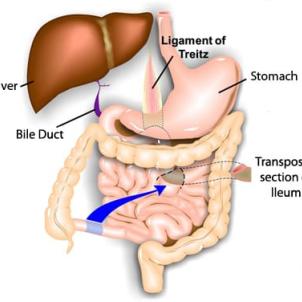Research Studies
Current Research Projects
Bariatric surgery remains the most effective and durable treatment option for obesity to date. More importantly, beyond weight loss, bariatric procedures have many advantageous metabolic effects including resolution of advanced obesity related liver disease or nonalcoholic steatohepatitis (NASH). In our NIH funded proposal Dr. Kohli’s laboratory will focus on the mechanisms of NASH resolution after weight loss surgery using an obese mouse model.
NIH R01-DK100314
Images


Key Findings
Impact of Bariatric Surgery on NAFLD and Bile Acid Physiology
Our primary area of research is the impact of bariatric surgery on non-alcoholic fatty liver disease (NAFLD) and bile acid physiology. In this area of research the laboratory works to understand the mechanism and impact of bariatric surgical procedures such as sleeve gastrectomy and roux-en-Y gastric bypass on nonalcoholic steatohepatitis (NASH) and other co-morbidities of obesity. Our research involves using small animal models of common and experimental bariatric procedures to study the role of bile acids in the improvements seen after bariatric surgery.
We began this work by using an experimental bariatric procedure called ileal transposition in rats (see figure 1), but we’ve progressed to murine vertical sleeve gastrectomy (VSG), specifically its effects on intestinal adaptation (see figure 2). Recently, we are also using ileal enteroid cultures (see figure 3) for investigating the mechanistic role of bile acid triggered signaling pathways including the farnesoid x receptor (FXR) and its downstream effectors such as fibroblast growth factor (FGF19).



The secondary area is non-alcoholic fatty liver disease (NAFLD) pathogenesis. We focus on the role of lipotoxicity, reactive oxygen species, inflammatory pathways and endoplasmic reticulum stress in the generation and regulation of the extreme stage of this disease; nonalcoholic steatohepatitis (NASH). Our laboratory has contributed to the field by highlighting the role of fructose in triggering above mentioned oxidative injury and inflammation which results in fibrosis within the liver. We introduced a novel yet simple dietary model of murine NASH wherein the disease is recapitulated with all its essential hepatic histologic features (steatosis, inflammation and fibrosis) in a milieu of obesity and insulin resistance (See Figure 1).
Data
- Our lab introduced a novel yet simple dietary mouse model where we recapitulated obesity related liver disease with all its essential features (steatosis, inflammation and fibrosis) in a milieu of obesity and insulin resistance. Hepatology 2010 Sep;52(3):934-44
- We next showed that weight loss induced by gastric bypass in humans with obesity increases circulating bile acids. J Clin Endo Metab, 2013 Apr;98(4):E708-12.
- Next in work published in the journal Nature, our group showed that mice that lack a specific bile acid nuclear receptor (FXR) underwent weight loss surgery and did not lose weight as expected. Nature, May 8 2014;509(7499):183-8.